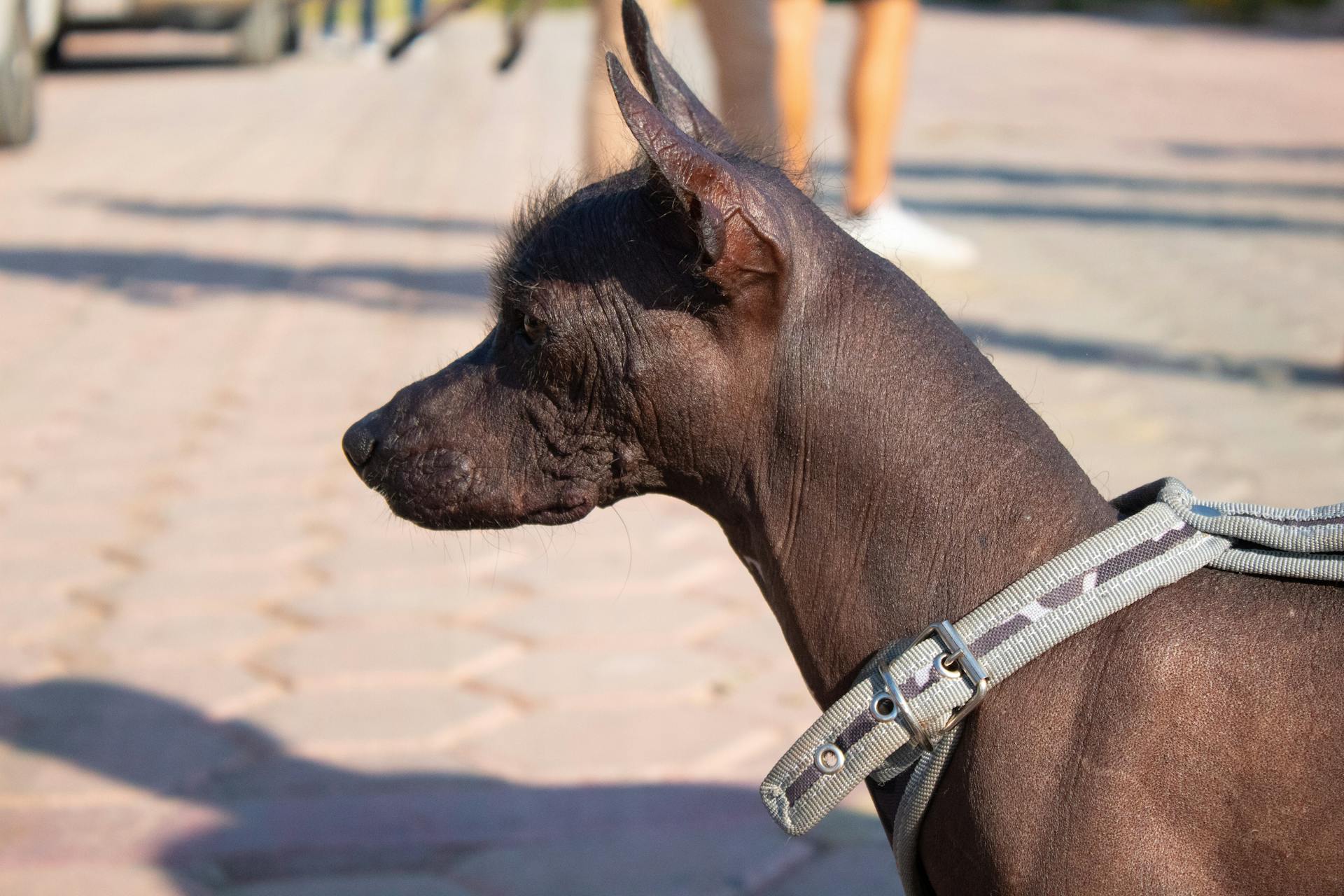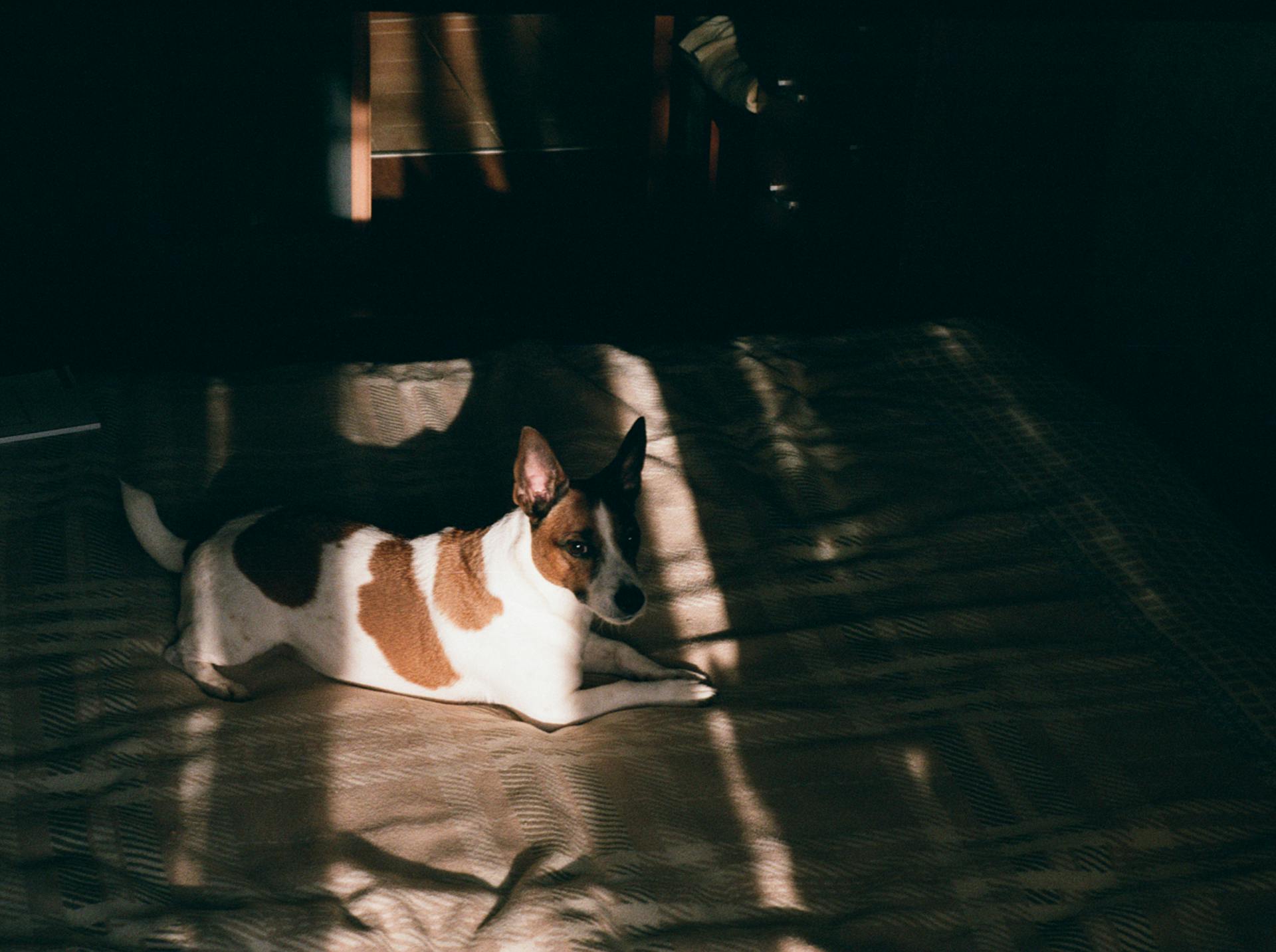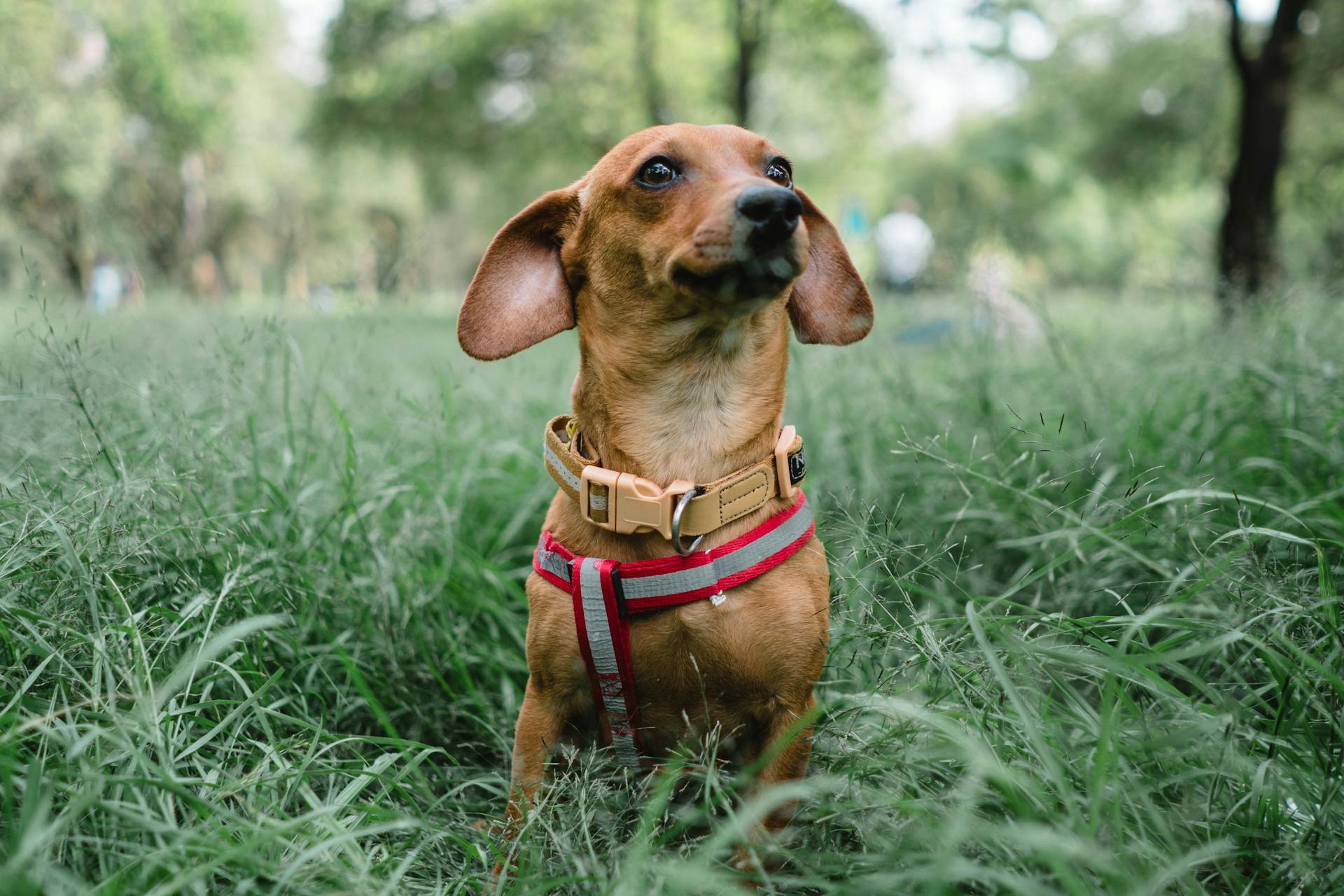
Alaskan Malamutes are a unique breed with a strong instinct to follow their pack leader. They were originally bred to pull heavy loads in the Arctic, so they have a high prey drive and can be independent.
Their strong will and independent nature can sometimes be misinterpreted as aggression. In reality, this is just a result of their breeding and instincts.
If you're considering owning an Alaskan Malamute, it's essential to be aware of their high energy levels and exercise needs. They require regular physical and mental stimulation to prevent boredom and destructive behavior.
Alaskan Malamutes are loyal and loving companions, but they do require an experienced owner who can provide the necessary structure and training.
Here's an interesting read: Are Malamutes Good Guard Dogs
Factors Influencing Aggression
Alaskan Malamutes can display aggressive behavior under certain circumstances. Understanding these factors is crucial for owners to prevent and manage aggressive behavior.
A lack of physical exercise can lead to frustration, which might manifest as aggressive behaviors in Alaskan Malamutes. This is because they are working dogs that require regular exercise.
Here's an interesting read: Alaskan Malamute Shed
Intelligent Alaskan Malamutes can become bored if not provided with mental stimulation, leading to undesirable behaviors. Providing them with toys, puzzles, and training exercises can prevent this.
Dogs that are kept in a stressful or chaotic environment are more likely to display aggressive behavior. A calm and stable environment can help prevent this.
A suitable environment for Alaskan Malamutes includes regular physical exercise and mental stimulation. This can be achieved by providing them with toys, puzzles, and training exercises.
Here are some key factors to consider when creating a suitable environment for your Alaskan Malamute:
- Physical Exercise: Regular exercise is essential for Alaskan Malamutes.
- Mental Stimulation: Providing mental stimulation through toys, puzzles, and training exercises can prevent boredom and undesirable behaviors.
- Safe Spaces: Providing a secure environment is essential for the safety of both your Alaskan Malamute and others.
Loud noises, unfamiliar people, and other animals can also trigger aggressive behavior in Alaskan Malamutes. Owners should provide a calm and stable environment for their dogs and avoid exposing them to stressful stimuli.
Training and Socialization
Training and socialization are crucial factors that determine the temperament of an Alaskan Malamute. Proper training and socialization can prevent aggression in Alaskan Malamutes, while inadequate training and socialization can lead to aggressive behavior.
You might enjoy: Alaskan Malamute Training
Alaskan Malamutes should be exposed to different people, animals, and environments from an early age to help them become well-adjusted and confident dogs. This socialization should continue throughout the dog's life.
Professional training and behavior modification can be effective in reducing aggression in Alaskan Malamutes. Positive reinforcement techniques, such as rewarding good behavior and ignoring bad behavior, are key to successful training.
Here are some key aspects of training and socialization for Alaskan Malamutes:
- Start training and socialization early in the dog's life
- Use positive reinforcement techniques, such as treats and praise
- Exposure to different people, animals, and environments is essential
- Consistency is key to establishing the owner's role as the leader
Influence of Environment
Alaskan Malamutes thrive in environments that cater to their physical and mental needs. This is crucial for their overall well-being and to prevent unwanted behaviors.
Regular physical exercise is essential for Alaskan Malamutes, as they are working dogs. A lack of physical activity can lead to frustration, which might manifest as aggressive behaviors.
Providing mental stimulation is also vital for Alaskan Malamutes, as they are intelligent dogs. Toys, puzzles, and training exercises can prevent boredom and its associated undesirable behaviors.
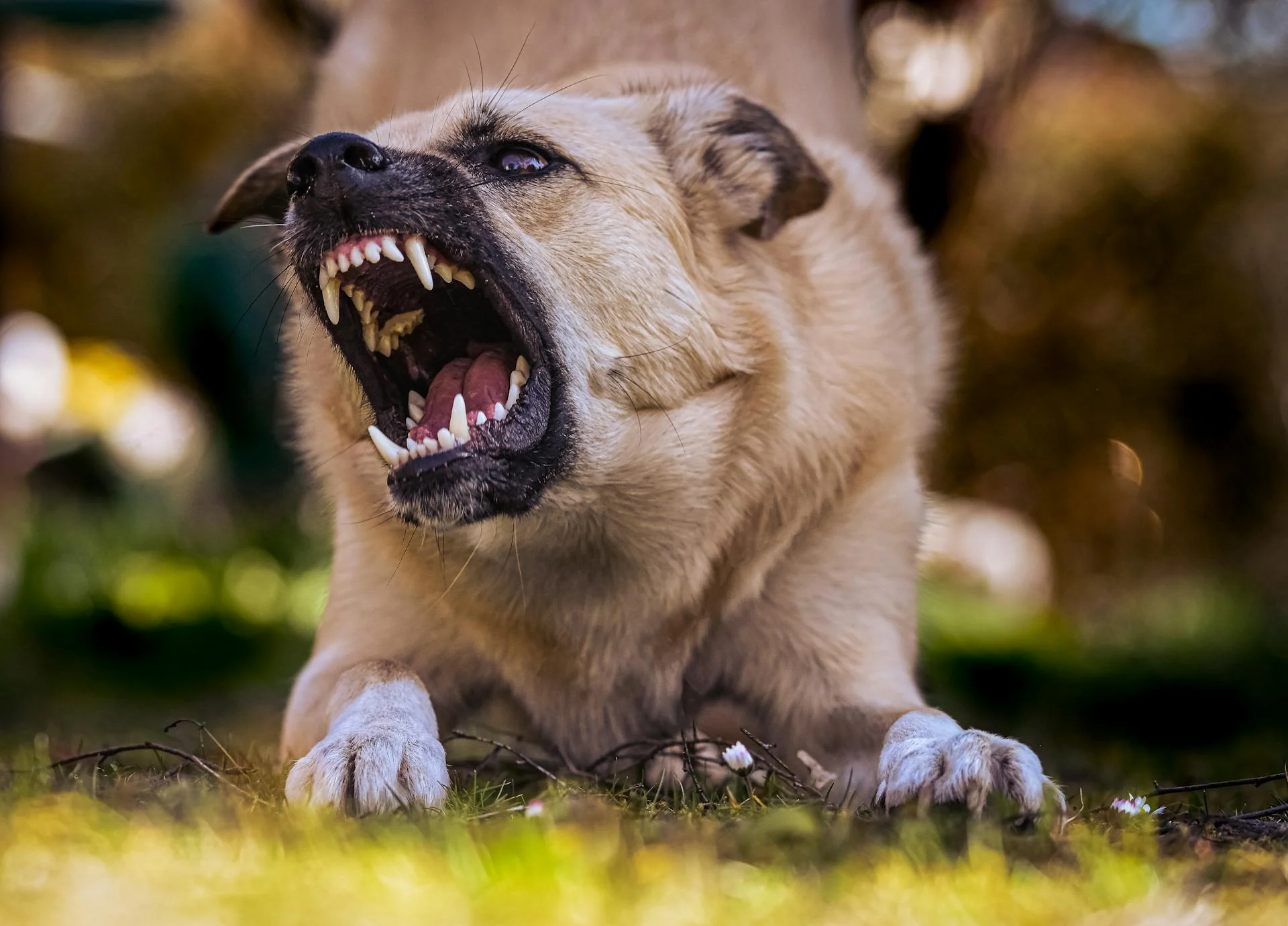
Safe spaces are necessary for Alaskan Malamutes, given their size and strength. This is not only for their safety but also for the safety of others.
Here's a breakdown of the key environmental factors to consider:
- Physical Exercise: Regular exercise to prevent frustration and aggressive behaviors.
- Mental Stimulation: Toys, puzzles, and training exercises to prevent boredom and undesirable behaviors.
- Safe Spaces: Secure environment to ensure the safety of both the dog and others.
A suitable environment is crucial for Alaskan Malamutes, and owners should strive to provide a calm and stable environment to prevent aggressive behavior.
Training and Socialization
Training and socialization are crucial factors that determine the temperament of an Alaskan Malamute. Proper training and socialization can prevent aggression in these dogs.
Alaskan Malamutes that are not properly trained and socialized can become aggressive towards people and other animals. Owners should start training and socialization at an early age and continue throughout the dog's life.
Positive reinforcement techniques, such as treats and praise, are effective in training Alaskan Malamutes. This approach encourages good behavior and ignores bad behavior.
Consistent training from an early age not only instills desired behaviors but also establishes the owner's role as the leader. This helps to prevent potential dominance or unwanted behaviors.
Curious to learn more? Check out: Alaskan Malamute Behaviour
Here are some key aspects of training and socialization for Alaskan Malamutes:
- Start training and socialization at an early age.
- Continue training throughout the dog's life.
- Use positive reinforcement techniques, such as treats and praise.
- Establish consistent leadership and clear commands.
- Expose the dog to various environments, people, and animals.
By following these guidelines, you can help your Alaskan Malamute become a well-adjusted and confident dog. With patience, consistency, and positive reinforcement, you can prevent aggression and strengthen your bond with your dog.
Recognizing and Preventing Aggression
Recognizing aggressive behavior in Alaskan Malamutes is crucial to prevent potential harm. Growling, a low, rumbling sound often accompanied by bared teeth and a raised hackle, is a common sign of aggression.
Proper training and socialization are key to preventing aggression in Alaskan Malamutes. Consistent training from an early age instills desired behaviors and establishes the owner's role as the leader.
A stiff, rigid posture and direct eye contact can be signs of a dog feeling threatened or aggressive, while a relaxed, loose body and wagging tail indicate a friendly and non-aggressive demeanor.
Recognizing
Recognizing the signs of aggression in Alaskan Malamutes is crucial to prevent any potential harm. Growling is one of the most common signs, often accompanied by bared teeth and a raised hackle.
A stiff, rigid posture and direct eye contact can also be indicators of a dog feeling threatened or aggressive. This body language is a clear warning sign that the dog needs to be approached with caution.
If your Alaskan Malamute is feeling cornered or trapped, it may snap or bite. This behavior can also occur when it perceives a threat to its territory or family.
Learning to recognize these signs can help you prevent aggressive incidents and ensure a happy and healthy relationship between you and your dog. Early intervention and proper training are key to addressing any potential issues.
Preventing
Proper training is essential for preventing aggression in Alaskan Malamutes, as it can instill desired behaviors and establish the owner's role as the leader.
Consistent training from an early age can make a big difference in shaping your Alaskan Malamute's behavior.
Alaskan Malamutes are generally not aggressive, but they can become aggressive if they are not properly trained and socialized.
Proper training can mitigate potential dominance or unwanted behaviors, making it a crucial aspect of preventing aggression.
By establishing a strong bond with your Alaskan Malamute through consistent training, you can reduce the likelihood of aggression and create a more harmonious relationship.
Temperament and Behavior
The Alaskan Malamute's temperament is shaped by its history as a cooperative worker in the Arctic. They're generally good-natured and not aggressive by default.
Alaskan Malamutes are friendly, playful, and gentle giants, making them great companions for families. They're loyal and affectionate, but can be stubborn at times.
Their high prey drive can make them aggressive towards smaller animals, so it's essential to supervise them around cats, rabbits, or other small pets. Proper training can help prevent unwanted behavior.
Here are some key characteristics of the Alaskan Malamute's temperament:
- Generally good-natured and not aggressive by default
- High prey drive can lead to aggression towards smaller animals
- Can be stubborn at times, but with proper training and socialization
Overall, Alaskan Malamutes are loving and loyal companions, but they require proper socialization, training, and care to ensure they're well-behaved and safe around others.
Temperament and Behavior
Alaskan Malamutes are known for their friendly and playful nature, making them great companions.
Their temperament can vary depending on their upbringing, socialization, and training, but they are generally not aggressive towards humans.
Malamutes are good with children and make excellent family pets, but they can be wary of strangers and may be protective of their family.
Readers also liked: Are Alaskan Malamutes Good Family Dogs
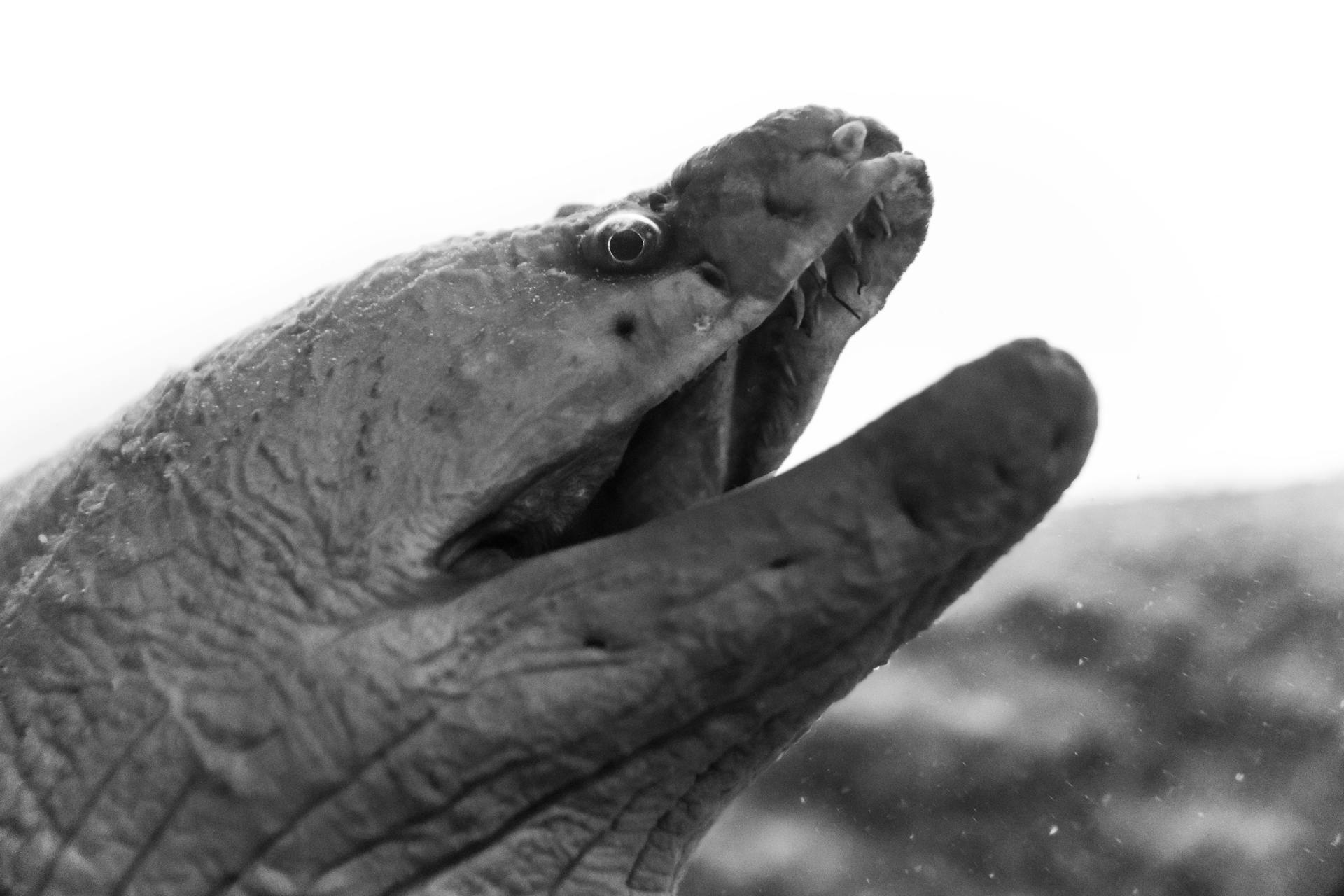
Proper socialization and training can help prevent any potential aggression towards strangers, and it's essential to supervise them around smaller animals.
Their high prey drive can make them aggressive towards smaller animals, so it's crucial to provide proper training to prevent unwanted behavior.
Responsible breeders should screen their breeding dogs for genetic disorders and temperament issues to ensure that their puppies have a good temperament.
Alaskan Malamutes bred from aggressive parents are more likely to display aggressive behavior, so it's essential to choose a reputable breeder.
Here's an interesting read: Why Are Chihuahuas so Aggressive
Sled
Sled dogs, like Alaskan Malamutes, are bred for their endurance and strength, not for aggression. They thrive on physical and mental stimulation.
Their natural instinct is to work and pull, making them perfect for sled racing and other dog sports. They love to run and exercise, and they need regular activity to stay happy and healthy.
In fact, neglecting their exercise needs can lead to destructive behavior, just like it can with any dog breed. This is because they were bred to work, and they need to do so to stay satisfied.
Their love of interaction with humans makes them great family pets, but they do require proper training and socialization to ensure they grow into well-behaved adults.
Check this out: Malamute Sled
The Natural Temperament
Alaskan Malamutes are friendly, affectionate, and sociable dogs by nature.
They're generally amiable and enjoy being around people, which makes them a great addition to families with kids.
Their playful demeanor is a big part of their charm, and they're known to be especially gentle with children.
However, being independent thinkers, they may sometimes come across as stubborn.
Here are some key aspects of the Alaskan Malamute's natural temperament:
As gentle giants, they're generally not aggressive towards humans, but their size should not be taken lightly.
Proper training and socialization are crucial to ensure they're well-behaved and safe around others.
Interactions with Other Pets and Humans
Alaskan Malamutes generally get along well with other dogs and pets, but early socialization is key to ensure a harmonious household. This includes introducing them to smaller animals like guinea pigs and gerbils as early as possible to prevent any potential conflicts.
Malamutes have a strong prey drive, which means they might be tempted to chase smaller pets. Proper introductions and supervision are essential to manage this instinct, and early socialization can help curb agitated behavior between Malamutes of the same sex.
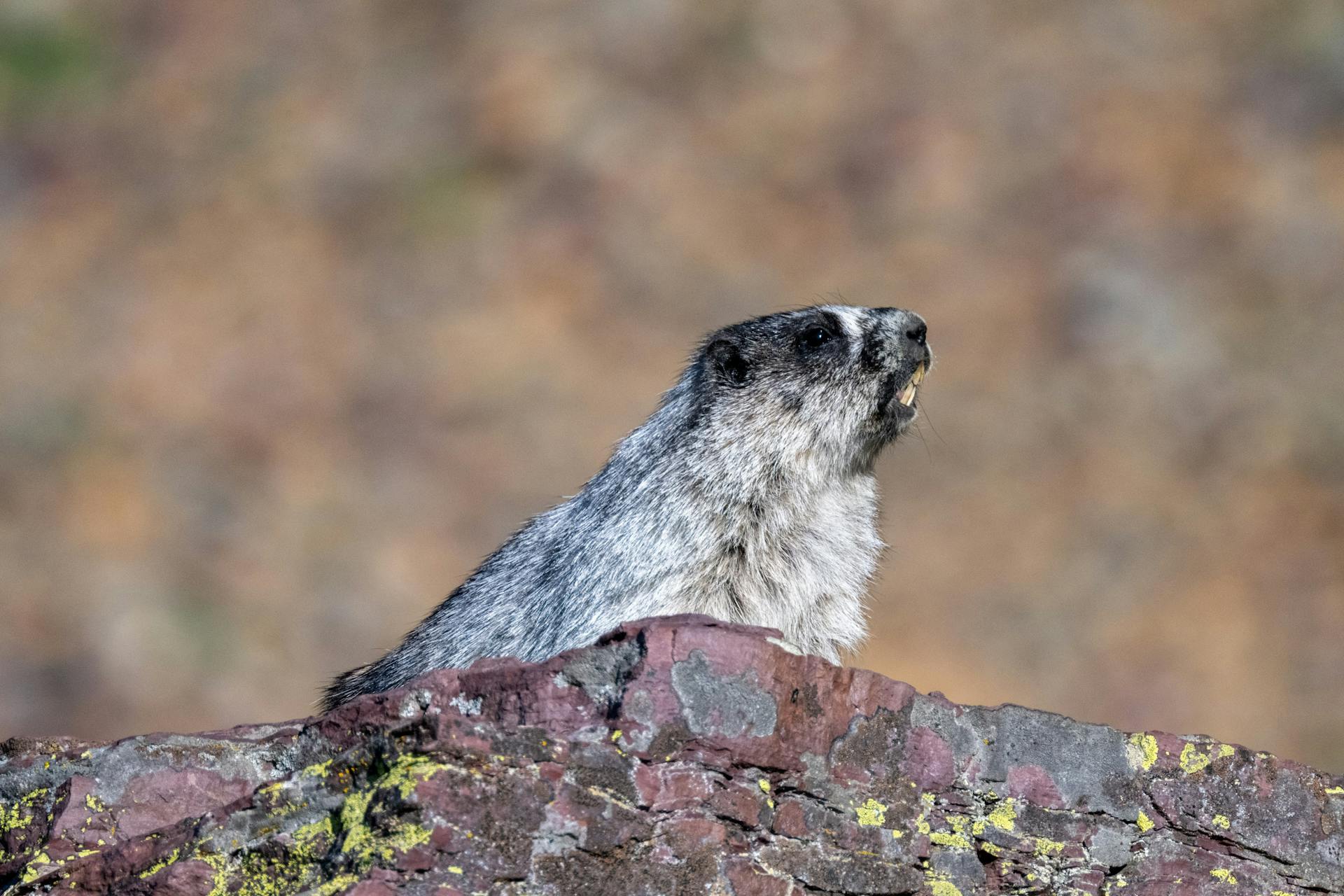
Proper training and socialization can also help Alaskan Malamutes learn to distinguish between friend and foe, reducing the likelihood of barking or growling at strangers. With patience and consistency, they can become good guard dogs while also being well-behaved around family and friends.
Here's a quick rundown of what to expect when introducing an Alaskan Malamute to other animals and strangers:
- With Other Dogs: Malamutes may show dominance towards dogs of the same sex, so proper introductions and supervision are crucial.
- With Smaller Pets: Early socialization and training can help manage their prey drive and prevent conflicts.
- With Strangers: Proper training and socialization can help them learn to distinguish between friend and foe, reducing the likelihood of barking or growling.
Response to Strangers
Alaskan Malamutes can be wary of strangers, especially if they are not properly socialized. They may bark or growl at strangers who approach their home or their family.
Socialization from a young age is key to helping Malamutes develop positive relationships with people and other animals. This includes exposing them to various environments, people, and situations.
Malamutes have a natural protective instinct and can be good guard dogs. However, their behavior towards strangers and territorial tendencies require proper training and socialization to ensure they respond appropriately in different situations.
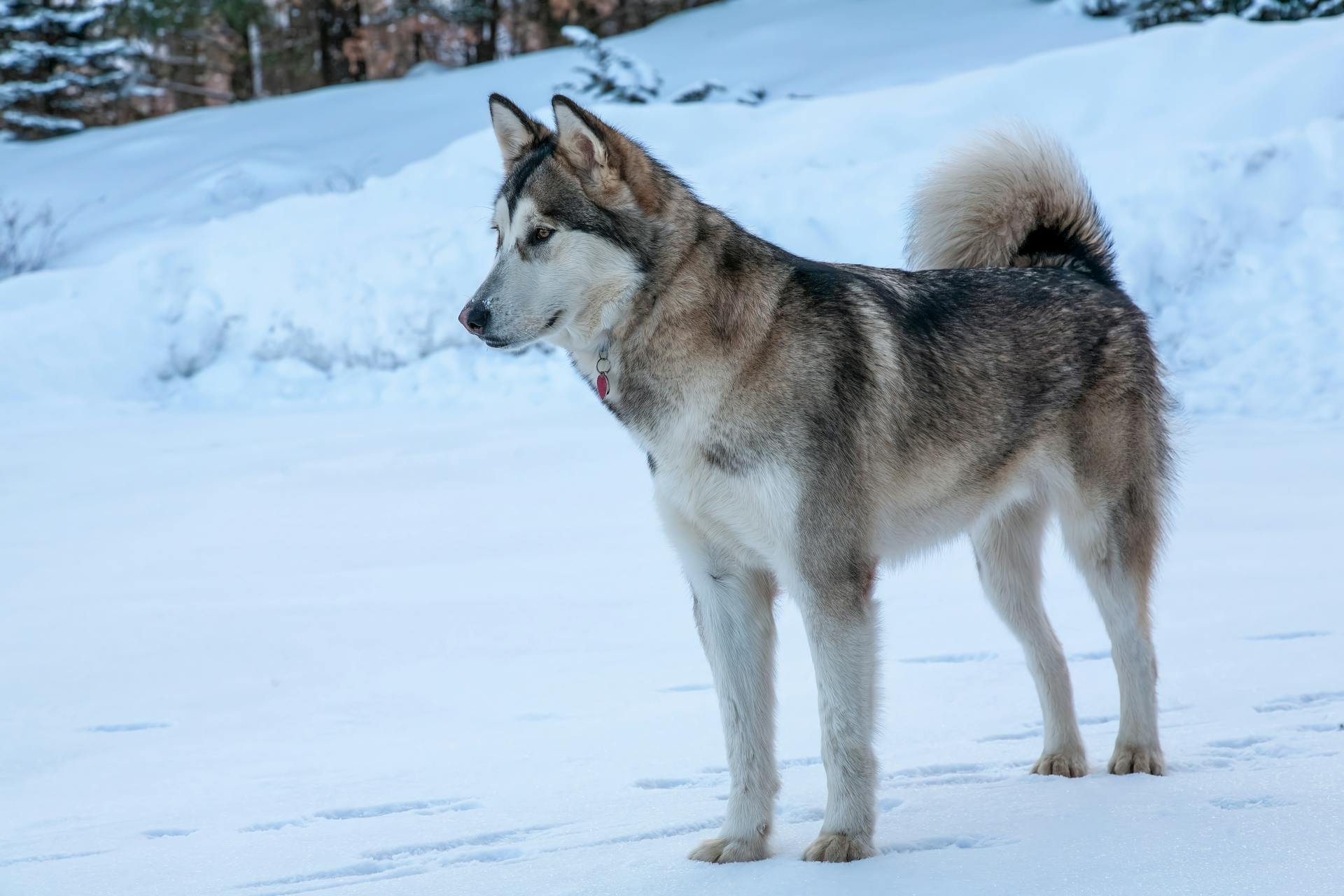
With proper training and socialization, Malamutes can learn to distinguish between friend and foe and respond accordingly. This means they can be calm and friendly around familiar people, but also alert and protective when necessary.
It's essential to understand that Malamutes are not naturally aggressive, but rather wary of strangers. This is why it's crucial to socialize them properly to avoid any potential harm.
Other Pets
Alaskan Malamutes generally get along well with other dogs and pets, but early socialization is crucial to prevent aggressive behavior.
One important aspect to keep in mind is that Malamutes of the same sex might not get along famously, but early socialization can help curb this type of agitated behavior.
If you own smaller animals like guinea pigs or gerbils, it's best to avoid interaction with your Malamute to be on the safe side.
Early socialization and training can help manage your Malamute's high prey drive and prevent them from chasing smaller pets.
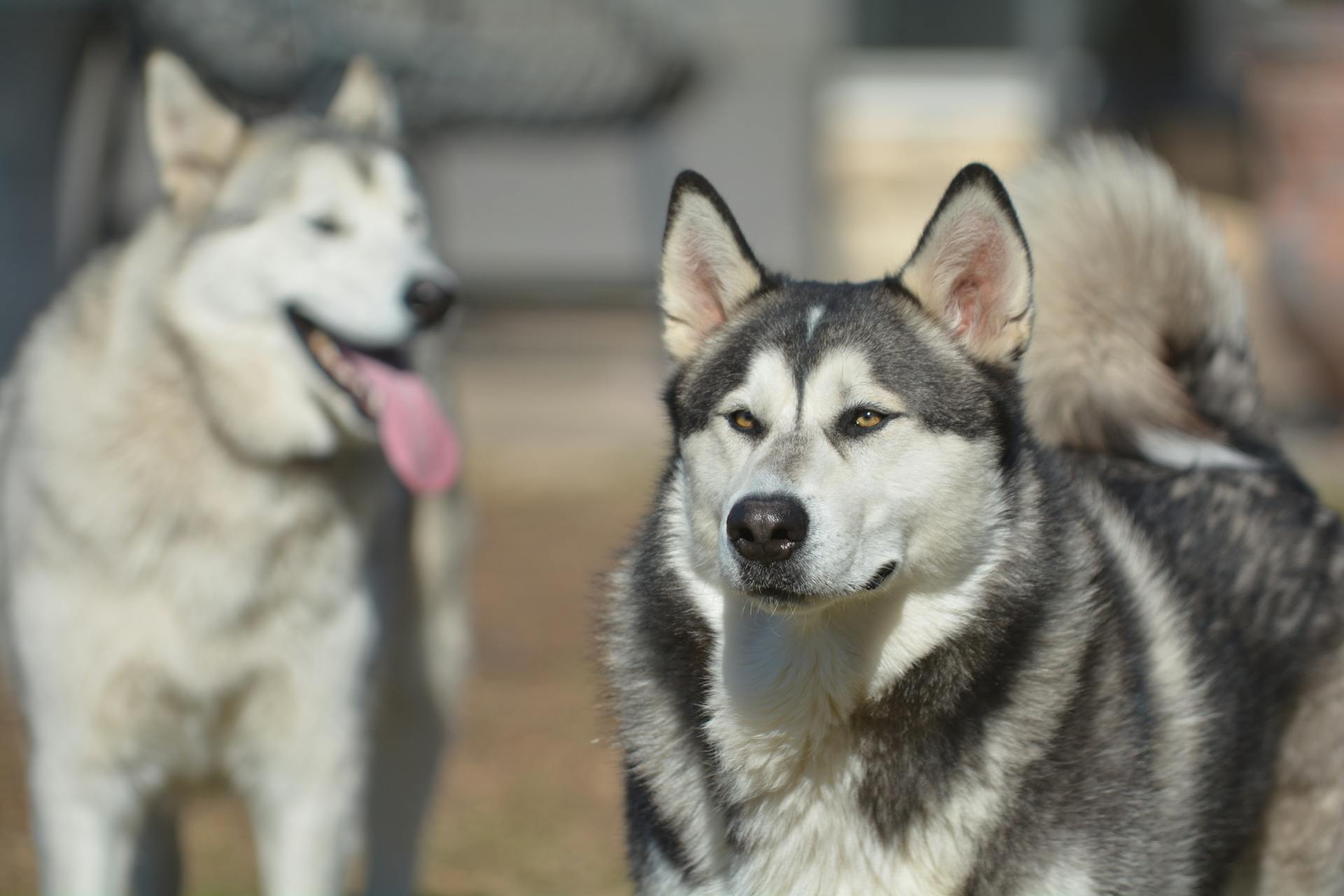
Here are some key points to consider when introducing your Malamute to other pets:
- With Other Dogs: Proper introductions and supervision are essential, especially if you're introducing a Malamute to a dog of the same sex.
- With Smaller Pets: Early socialization and training are crucial to prevent your Malamute from chasing smaller animals.
Adopting an Alaskan Malamute from a rescue or shelter can give the dog a second chance at a loving home, and many rescued Malamutes come with previous training, making the transition smoother.
Proper supervision and training are essential when introducing your Malamute to smaller pets, and with patience and consistency, you can help your Malamute coexist peacefully with other pets.
Rottweiler
Rottweilers are often used for traditional guard dog roles due to their strength, intelligence, and aggression.
They are typically bred for guarding and protection, making them a popular choice for this type of work.
Rottweilers are more aggressive than Alaskan Malamutes, which can be an advantage in certain situations.
However, every dog is unique and may excel in different roles depending on their individual temperament and training.
In comparison to Alaskan Malamutes, Rottweilers are more commonly used for guard dog roles and may be better suited for these types of jobs.
Explore further: Why Are Rottweilers Aggressive
Comparison and Statistics
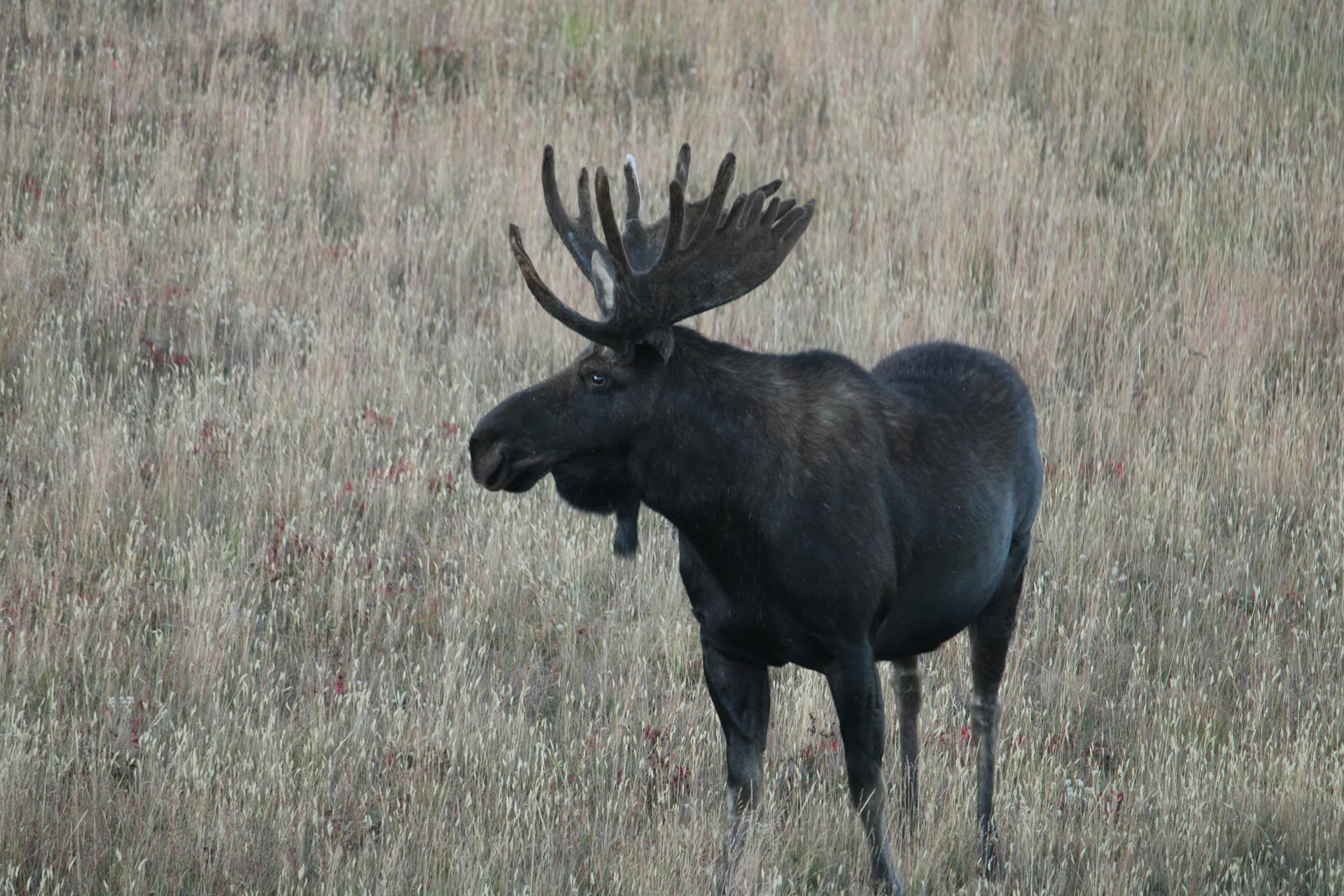
The Alaskan Malamute's bite statistics are actually quite impressive. They're ranked 67th out of 79 breeds, with a reported bite rate of 0.5%.
This is significantly lower than some other breeds, like the Chihuahua and Dachshund, which have a higher bite rate. Proper training, socialization, and responsible ownership can greatly reduce the risk of a dog biting.
Bite Statistics
The Alaskan Malamute is ranked 67th out of 79 breeds in terms of bite rate, with a reported rate of 0.5%.
This is significantly lower than some other breeds, such as the Chihuahua and Dachshund, which have a higher bite rate.
Any dog has the potential to bite, regardless of breed, so it's essential to provide proper training, socialization, and responsible ownership to reduce the risk of a dog biting.
Teaching children how to interact with dogs safely is also crucial, and it's never okay to leave a child unsupervised with a dog.
Comparison with Other Breeds
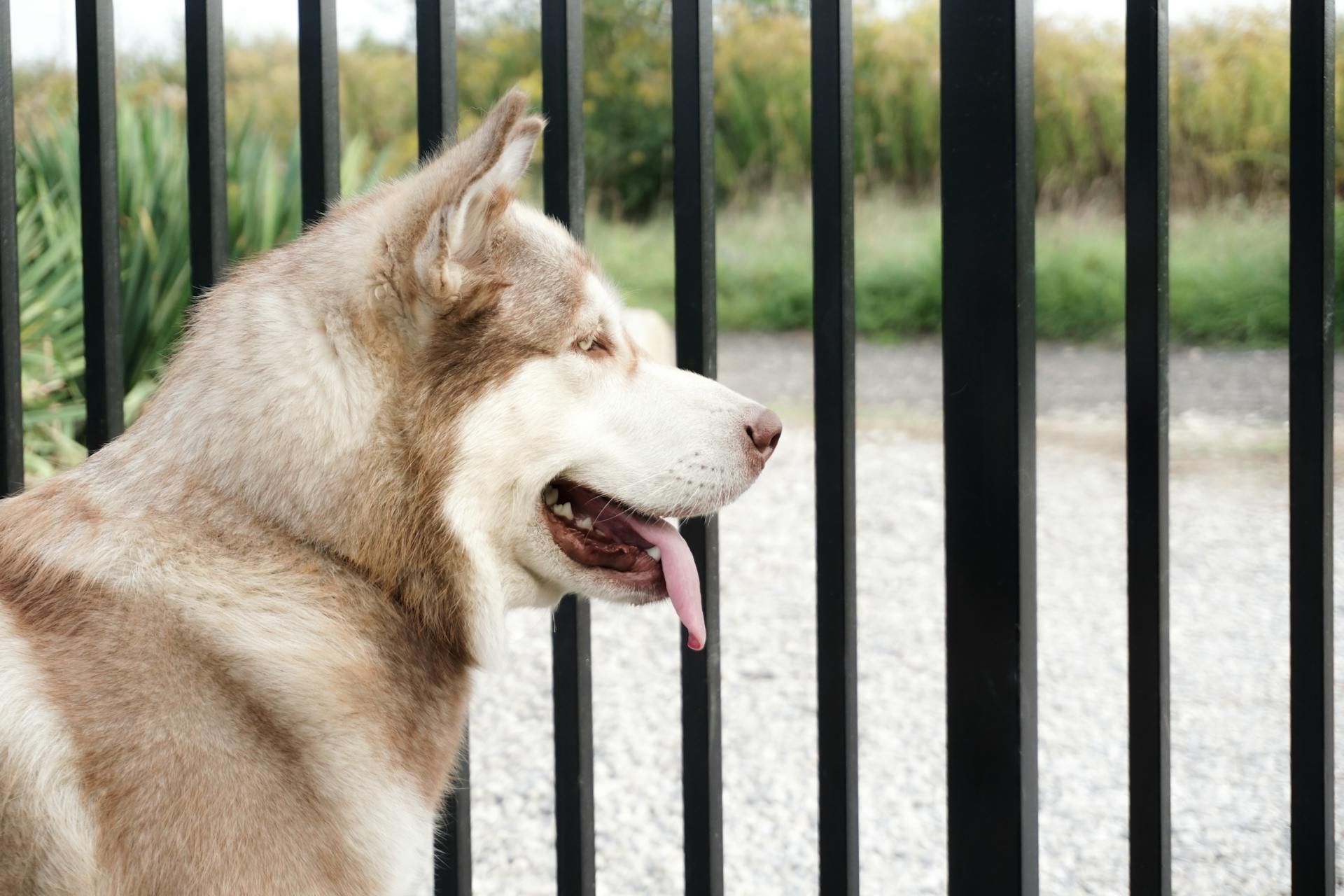
The Alaskan Malamute's temperament is often compared to other breeds, and it's interesting to note that they share similarities with the Siberian Husky. Both breeds are sled dogs and have similar temperaments.
However, the Siberian Husky is generally more sociable towards strangers and other animals, while the Alaskan Malamute can be more reserved and protective of its family. This is a key difference to consider if you're thinking of bringing either breed into your home.
The German Shepherd is also known for its loyalty and protectiveness, but can be aggressive towards strangers and other animals if not properly trained and socialized. With proper care and training, however, German Shepherds can be well-behaved and obedient.
Pit Bulls, on the other hand, have a reputation for being aggressive, but this is largely due to irresponsible breeding and training. When raised and trained properly, Pit Bulls can be loyal and affectionate pets.
Here's a quick comparison of the breeds mentioned:
Overall, aggression is not a breed-specific trait and can be influenced by a variety of factors, including genetics, upbringing, and training.
FAQ About
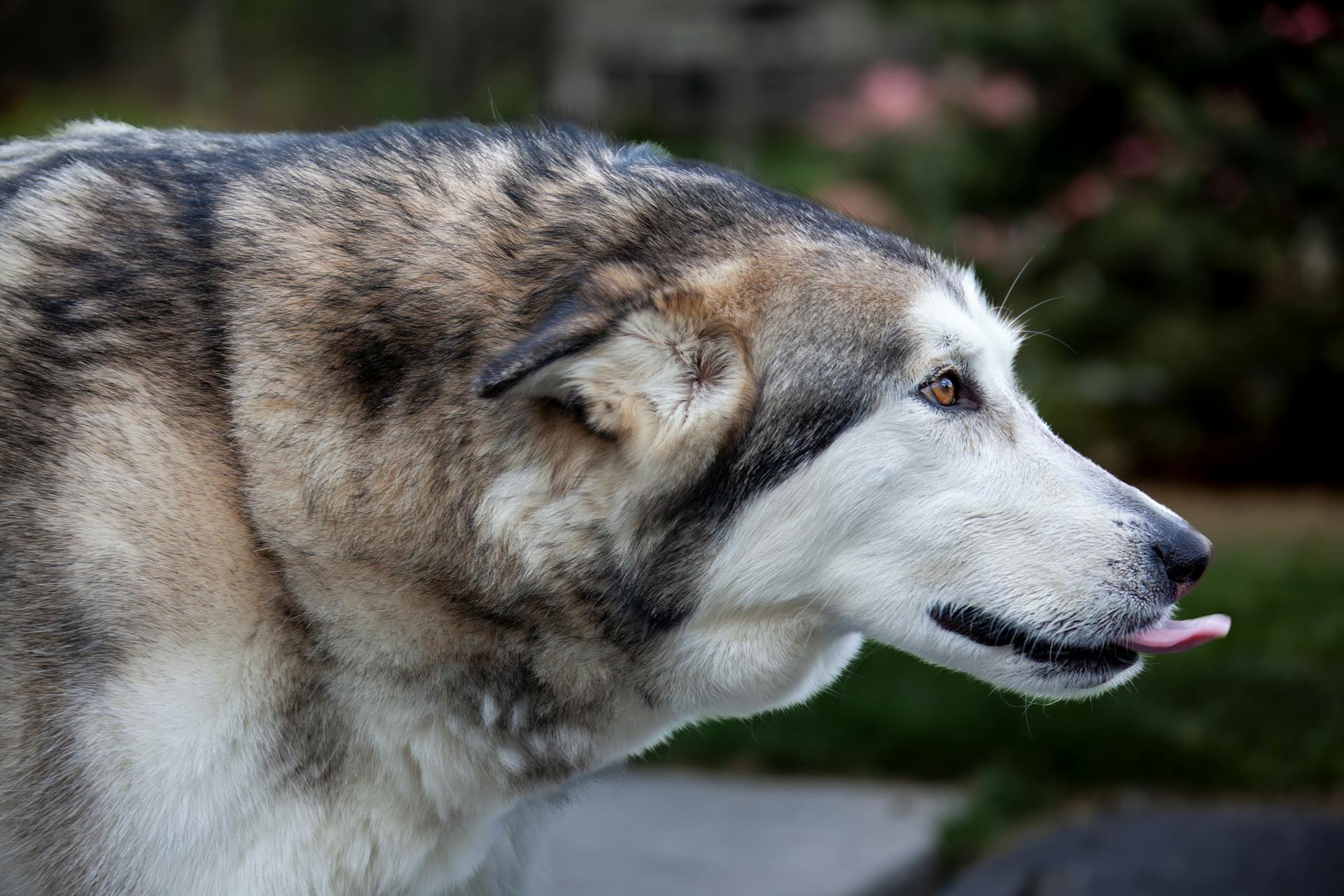
Are you considering bringing an Alaskan Malamute into your family, but have concerns about their temperament?
Alaskan Malamutes can be protective of their family and territory, which may be misinterpreted as aggression.
Their natural instinct to defend is rooted in their history as working dogs, bred to pull sleds in the harsh Arctic environment.
They are highly intelligent and can be strong-willed, requiring consistent training and socialization from an early age.
Alaskan Malamutes are generally not aggressive towards people, but they can be wary of strangers and may require time to warm up to new individuals.
In fact, many Alaskan Malamutes are known to be gentle and loving with their family members, especially if they receive proper care and attention.
However, their strong prey drive and high energy levels can sometimes lead to destructive behavior if they don't receive enough physical and mental stimulation.
With proper training, socialization, and exercise, Alaskan Malamutes can thrive as loving and loyal companions.
Frequently Asked Questions
Are Alaskan Malamutes good family dogs?
Alaskan Malamutes can make great family pets, but they may not be suitable for families with very young children due to their large size. They're an excellent choice for active families who enjoy outdoor winter activities.
Are Malamutes friendly with other dogs?
Malamutes can get along with other dogs if well-socialized, but it's crucial to introduce them carefully. Socialization from an early age is key to a harmonious multi-dog household.
Featured Images: pexels.com
